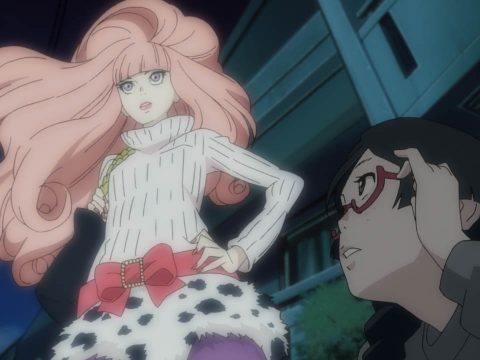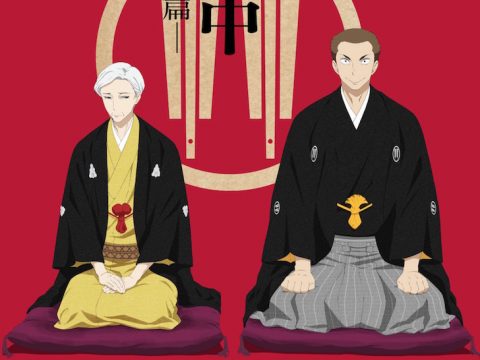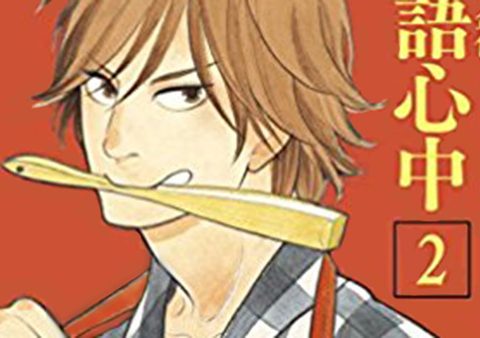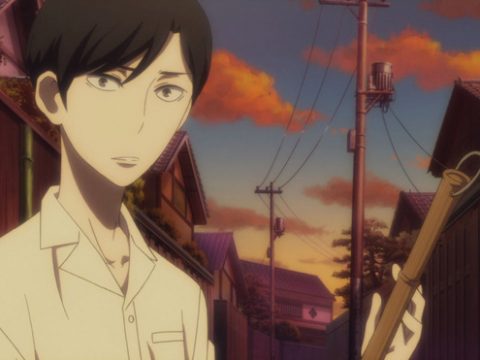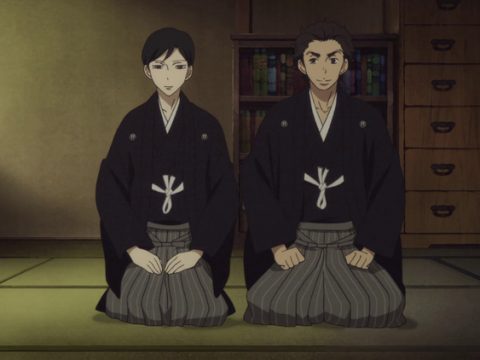 I anticipated the first volume of Descending Stories: Showa Genroku Rakugo Shinju with a mixture of joy and dread. Nick Creamer, one of my favorite contemporary critics, had recommended the anime adaptation’s first season with great enthusiasm, but not without reservation. “The larger than life… construction and telling” often left it feeling impersonal, he warned; made it an artifact likely to stir your sense of beauty but to leave your emotions unmoved. The theatrical staging—“something like a rakugo performance itself”—and ostentatious visuals only served to reinforce that distance between viewer and viewed. Artist and author Haruko Kumota’s sharp but severe line work, handsome but willowy character designs, and generally sparse backgrounds—all so reminiscent of Natsume Ono’s work—seemed to guarantee that the anime’s weaknesses were inherited from the source material. The “shinju” of the title even translates as “double-suicide,” a reference to at least one character’s desire to die without ever passing his art on. Tragedy is one of the most venerable of genres, and my love of beauty is unstinted, but tragedy does not work when it is sterile: it becomes mere spectacle, unable to move our emotions, the exact opposite of what tragedy hopes to do.
I anticipated the first volume of Descending Stories: Showa Genroku Rakugo Shinju with a mixture of joy and dread. Nick Creamer, one of my favorite contemporary critics, had recommended the anime adaptation’s first season with great enthusiasm, but not without reservation. “The larger than life… construction and telling” often left it feeling impersonal, he warned; made it an artifact likely to stir your sense of beauty but to leave your emotions unmoved. The theatrical staging—“something like a rakugo performance itself”—and ostentatious visuals only served to reinforce that distance between viewer and viewed. Artist and author Haruko Kumota’s sharp but severe line work, handsome but willowy character designs, and generally sparse backgrounds—all so reminiscent of Natsume Ono’s work—seemed to guarantee that the anime’s weaknesses were inherited from the source material. The “shinju” of the title even translates as “double-suicide,” a reference to at least one character’s desire to die without ever passing his art on. Tragedy is one of the most venerable of genres, and my love of beauty is unstinted, but tragedy does not work when it is sterile: it becomes mere spectacle, unable to move our emotions, the exact opposite of what tragedy hopes to do.
And a cursory reading of the events of this first volume would suggest that, yes, the central plot is designed to wring the maximum amount of drama from the lives of its characters for nothing but our amusement. Ex-con Kyoji moves in with his idol, the rakugo master Yakumo, and his estranged adopted daughter, Konatsu, in order to pursue the craft of rakugo, but in doing so causes Konatsu’s resentment and suspicions that Yakumo killed her father out of jealousy to flare up, which in turn destroys the tenuous peace the two had managed to establish over the decades. Later, Kyoji’s former superior in the gang he once joined stops in to recruit him for one more crime that will require Kyoji to spend another stint in jail. But for all that this sounds heavy—for all that Yakumo spends lamenting the death of rakugo and for all that Konatsu mourns her father’s passing—Descending Stories is defined so far by nothing as much as warmth and by no character as much as the infectiously optimistic Kyoji.
There may the drama at play, but it occurs at so heightened a pitch it is difficult to take it seriously as a depiction of real human suffering, let alone tragedy. At least for now it is melodrama, pure and simple. Emotions are brash and broad: when Yotaro discovers Konatsu has been practicing rakugo in imitation of her deceased father, he throws the plays she’s reading into her face. The solutions to emotional problems are simple and direct: all it takes to advance Kyoji from a hopeless fumbler to a natural talent who displays shades of Konatsu’s legendary father’s genius is a pep-talk from Konatsu and the desire to show how dedicated to rakugo he is. Characters are not flat, necessarily, and there are hints of more subtle developmental work afoot, but Kumota does not seem dedicated to wringing these people or their conflicts dry for maximum emotional impact. Her interests seems to lie more than anything in demonstrating the joy these people feel when allowed to follow their instincts.
Nowhere is this more apparent than the character of Kyoji. In a more serious work he would be far less tolerable and likely immediately dismissed as prestigious and haughty as Yakumo. But here, in Kamuto’s more exaggerated, warmer world, his imbecility, his impulsiveness and his optimism are so infectious that it’s no wonder the severe Yakumo would adopt him first as his ward (“or his pet, more like,” as the clothing store owners joke) and then, later, as apprentice. He’s an endless font of goodwill whose puppy-like desire to do right by the art and the people he loves carries over into his first major performance at the emotional and narrative climax of this first volume with deep emotional payoff. Even if he’s only just adopted the form, and then only out of a spontaneous fit of interest, the look of joy that crosses his face when he finds his former boss laughing at his work is so real that anybody who’s ever pursued a passion should recognize in his simultaneous humility and elation the same ecstasy they felt the first time they found the love they’d dedicated to an art returned.
Gekiga pioneer Yoshihiro Tatsumi may be best known for his gritty stories of urban alienation, but even he acknowledged in the afterword of Fallen Words, his own collection of rakugo adaptations, that in rakugo theater it’s the “anything goes approach … mix(ing) human kindness, mystery, the bizarre, love stories … and unexpected plot twists” that makes the form such a delight. That in rakugo, “laughter is supreme.” Haruko Kumota seems to have taken these words to heart: Descending Stories may not be so finely sketched as one might hope nor as trenchant as touted, but the author’s passion for the story and the passions of these characters are so evident that it plays (at least now) irresistibly.
Story & Art: Haruko Kumota
Publisher: Kodansha Comics


